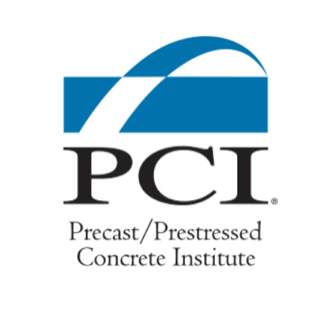
The Orange County Civic Center in Santa Ana recently was honored by a jury of architects, designers, and construction experts. The County Administration South Building received the 2021 Precast/Prestressed Concrete Institute Industry Sustainability Award.
“Once again, the precast concrete industry has put its best foot forward and has delivered many inspiring and impressive projects,” said PCI President and CEO Bob Risser, P.E. “Each year, the PCI Design Awards program
demonstrates that precast concrete is not only a practical solution to many construction challenges, but also a head-turning aesthetic solution.”
When Orange County decided to build a new building as part of the OC Civic Center in Santa Ana, Calif., they wanted it to be more than just another office center. The owner saw the building as an opportunity to enhance the community, says Deryl Robinson, vice president, senior program and construction manager, for Griffin Structures. It was the first building Orange County had built in 40 years, and they wanted it to reflect the elegant local architecture, which was dominated by a 120-year-old historic courthouse clad in natural sandstone.
“Our team’s challenge was to design and construct a building that combined high quality, durability, and a long life with minimal maintenance,” Robinson says. From the outset, the primary design objective was to create a beautiful and resilient building that would be efficient and operational for generations to come. The designers chose precast concrete because they knew it would deliver the desired durability and timeless appearance that the client was seeking—while staying within their budget.
The final $162 million design features a six-story office building on top of two levels of underground parking, with a freestanding 7,200 ft² conference center. The owner originally wanted the feature walls to be made of sandstone to match the courthouse; however, that wasn’t a cost-effective option, says the project’s architect, Melody Tang of LPA Design Studios. Instead, the design team elected to construct the feature walls out of colored precast concrete that was designed to exactly match the color of the sandstone while also meeting other project goals. “The ability to seamlessly blend freestanding architectural precast concrete walls around the site and ground floor with an efficient, lightweight, thin precast concrete shell was critical in achieving the overall design aesthetic,” Tang says.

Insulated Skin
The design team reviewed many material samples with the precast concrete fabricator before finding the right match for the project. The final solution features an integral colored precast concrete to emulate the rich red color of the historic sandstone, and thoughtful detailing of mitered corners and full returns of the panels gives the precast concrete the appearance of natural stone.
“This accomplishment was made possible thanks to close collaboration between the construction manager, the precast concrete producer, and the architect,” Tang says. Weekly meetings throughout the course of construction ensured that aesthetic goals were met while taking into consideration logistical challenges of casting the panels at the plant, transporting them to the site, and installing and aligning them in the field.
To enhance the energy efficiency of the design, spray foam insulation was applied to the thin-shell precast concrete at the plant. Attaching insulation directly to the skin of the panel minimized heat transfer between the exterior and interior of the building,” says Jeremy Hart, director of civic and cultural design for LPA Design Studios. That helped the building receive a LEED Silver rating and reduced its projected energy use from the baseline standard by 76%. “An efficient building skin was critical to the ability to achieve performance goals established by the owner and design team,” says Hart.
Because the building is built in an active seismic zone, its lateral resisting system is a buckling-restrained braced frame structure (BRBF), which allows the building to move as necessary and remain operational after a seismic event. To accommodate the movement allowed by the BRBF system, careful consideration was given to the precast concrete panels’ movement joints to ensure they could move with the frame in an earthquake but would not detract from the overall design aesthetic.
Finally, the use of precast concrete mitigated construction challenges in the busy urban setting, allowing the project to be completed five months ahead of schedule. “We and our client love the fact that we were able to achieve a natural look and feel in our building’s exterior envelope, while still adhering to budget realities,” says Robinson. “The client is extremely pleased with the outcome.”
The PCI Design Awards have showcased and recognized the creative and innovative use of precast concrete for the past 58 years. A panel of industry experts that includes engineers , architects, and precast concrete producers judges all nominees. The buildings and transportation categories are judged on aesthetic, structural, and use versatility; site, energy and operational efficiency, and risk reduction; and resiliency, such as structure durability, multi-hazard protection, and life safety and health.
Several projects are also honored with special awards. These are judged on similar criteria to the building and transportation projects, as well as additional requirements, including industry advancement, sustainable
design, technology, and designs using all-precast concrete solutions. These awards include the Harry H. Edwards Industry Advancement Award, the Building Information Modeling (BIM) Award, the Sustainable Design Award, and the All-Precast Concrete Solution Award.
All winning projects will be showcased and honored at the 2021 PCI Convention in New Orleans, Louisiana, with an event on May 21. They also will be highlighted in PCI publications, including PCI Journal, Ascent, and
ASPIRE magazines. Visit pci.org for details and photos of all winning and honorable mention projects.
